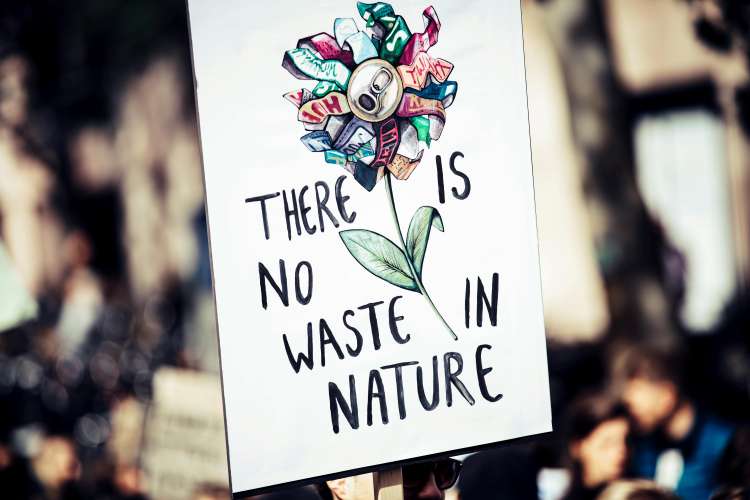
Green Action Week, observed in the first week of October, is a people’s campaign to promote sustainable consumption and circular economy. Launched in Sweden in 2010, the initiative now spans nearly 40 countries, including India. The theme, “Sharing Community,” encourages cultures of sharing and collaboration to ensure fairer access to goods and services while reducing the ecological burden. This year’s campaign is particularly relevant against the backdrop of the faltering global plastics treaty, where consensus on reducing plastic production and waste has stalled.
India formally launched its Mission Circular Economy in 2021, though the idea has long been embedded in cultural practices. The March 2025 Jaipur forum on Reduce, Reuse, Recycle (3R) reinforced this agenda, while the Prime Minister’s call for a Pro-Planet People (P-3) approach sought to balance environmental goals with human well-being. Yet, policy ambitions face daunting arithmetic. India’s material consumption is projected at 14.2 billion tonne by 2030; resource extraction already stands 251% above the global average, and only 20% of waste is recycled compared to Europe’s 70%.
India is expected to be the world’s third-largest economy by 2028, with aspirations of becoming a $10 trillion economy by 2030 under Make in India, the PLI scheme, and Atmanirbhar Bharat. The country has become the world’s second-largest mobile manufacturing hub. But this progress comes at a cost: e-waste surged 73% between 2019–20 and 2023–24, touching 1.75 million metric tonne, making India the third-largest e-waste producer globally. Rising electronic consumption, short product cycles, and fast fashion intensify the challenge.
READ I Women-owned MSMEs remain stalled at micro scale
Benefits of the circular path
A circular model offers both ecological and economic payoffs. By reducing waste and emissions, conserving biodiversity, and cutting carbon footprints, India could generate an estimated ₹14 lakh crore ($218 billion) in annual value by 2030, rising to ₹40 lakh crore ($624 billion) by 2050, while creating 18 million jobs. Initiatives such as the Right to Repair framework, standardisation of charging ports, and city-level programs like C-3 and CITIIS 2.0 illustrate early steps towards systemic change.
The circular economy is more than recycling. It is a redesign of production and consumption through the R-framework—Refuse, Rethink, Reduce, Reuse, Repair, Refurbish, Remanufacture, Repurpose, Recycle, Recover. India’s Right to Repair initiative challenges manufacturers who restrict repair options, while global players like IKEA, Adidas, and Philips are adopting take-back and refurbishing programs. The European Union has gone further with a Circular Economy Action Plan. India must guard against greenwashing and enforce accountability to ensure such measures deliver real change.
Tradition as a resource
India’s cultural practices offer a strong foundation. From kabadiwalas collecting dry waste to durable copper utensils and community kitchens, traditional systems exemplified circularity. But liberalisation and consumerism shifted behaviour towards a “make-use-dispose” culture. Restoring balance requires celebrating repair and reuse while embedding circularity into new consumption habits.
The bigger challenge lies in industries exploiting consumer insecurities through fast fashion, short-lived gadgets, and homogenised lifestyles. Synthetic textiles alone pollute water systems with microfibres. While rules such as the National Resource Efficiency Policy (2019) and Plastic Waste Management Rules (2022) exist, enforcement is weak. Mandatory reuse of construction waste, eco-friendly textiles, closed-loop supply chains, and upcycling initiatives—such as the Chennai-based effort that cleared 1.7 million cubic metres of landfill waste—should be scaled up with state support.
Sharing economy and behavioural shifts
The sharing economy aligns with younger Indians’ preference for access over ownership—whether renting furniture, cars, or even wedding attire. Thrifting in fashion adds style while cutting waste. Policy incentives for such enterprises can make sharing mainstream. Denmark’s national deposit-return system for bottles shows how consumer participation can be incentivised. India could replicate such models for plastics, e-waste, and medical waste, while expanding composting at household and community levels.
A multi-stakeholder framework is essential—businesses, governments, and civil society must invest in infrastructure, technology, and research. Breaking taboos around recycled and refurbished goods will be key to mainstreaming circular consumption. What India needs is a national-level Circular Policy with sector-specific targets, strict enforcement, and collaboration from households to industries.
If done well, circular and sharing economy models could make India a leader in sustainable development, ensuring growth that does not come at the expense of the planet. The country’s cultural legacy, combined with policy innovation, offers a chance to build a truly resource-efficient future.
Aakansha Choudhary is a Policy Researcher and Consultant, and George Cheriyan is Executive Director at Center for Environment and Sustainable Development India (CESDI).
George Cheriyan is Director of Centre for Environment and Sustainable Development India, a national NGO in Special Consultative Status with UN-ECOSOC, and accredited with UNEP & UN ESCAP. CESDI is also a member of South Asia Network on SDGs.

